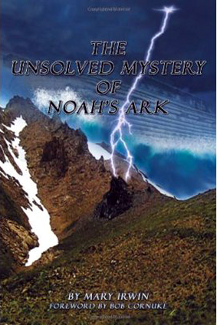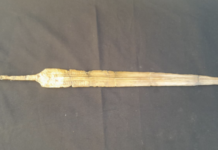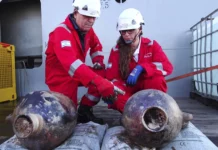Remains of long-sought vessel most likely in Iran

By Mark Ellis —
Apollo 15 astronaut James Irwin led multiple expeditions to Mt.Ararat in search of Noah’s ark. If found, it would likely be the greatest archaeological discovery in history. Tragically, Irwin died of a sudden heart attack in 1991, with his quest to find the ark unfulfilled.
Now his widow, Mary Irwin, is convinced she and her husband were searching on the wrong mountain. In her new book, “The Unsolved Mystery of Noah’s Ark” (West Bow Press), she reveals her findings after 20 years of painstaking research following her husband’s passing.
Irwin decided to write the book after watching a National Geographic documentary production: “Truth behind the Ark,” in which she appeared. After she viewed the documentary, she felt the project’s title was highly misleading.

“There was barely a shred of truth in any of it,” she says, because the filmmakers’ agnostic bias drove their conclusion that the story of Noah had its roots in Mesopotamian folklore.
After she decided to write a book about the ark, Irwin dove into her new research with relish, examining seven of the most noted stories. One by one, she demolished the less credible reports as pure fiction.
One of her breakthroughs came when the Holy Spirit reminded her of a whole drawer marked “Ararat” in her former husband’s files. She found the file in her daughter’s garage, with many tantalizing leads inside.
She found a 25-year-old letter from a German scholar, Karola Kautz, who had done many years of independent research on Noah’s ark. “I looked at it with my mouth hanging open,” Mary says. The closing words of the relatively short missive contained this enigmatic warning: “Jim, please do not risk your life on Mr. Ararat, where the ark has never been.”
Indeed, Genesis 8:4 refers to the “mountains of Ararat” (plural), which in Mary’s research refers to a broader area than the twin-peaked volcanic mountain in present-day Turkey. Part of the confirmation came from a map she uncovered that was drawn in the 1500’s titled “Mountains of Ararat” by Petrus Planeus, a Jewish historian.
“The mountains of Ararat in the 1500’s are the same as what is now known as the Taurus mountain range that separates Turkey from Iraq and runs to the northeast part of Iran where they are known as the Elburz Mountains. These mountain ranges are natural borders between the three countries,” Mary notes.
“It was gratifying to have proof that Mount Ararat is not the same as the ‘Mountains of Ararat.’”
Irwin’s book uncovers the inconsistencies in many of the accounts of explorers who claim to have seen Noah’s ark. But she found one source highly credible, the account of Ed Davis (now deceased), who worked with the Army Corps of Engineers in Iran during World War II.
Davis was part of a crew building roads through the mountains of Iran so that war supplies could be transported to the Soviet Union, an ally of the U.S. at the time. During their road-building project, several waterways were inadvertently blocked that supplied water to local farmers.
“Ed gave several sticks of dynamite to the local farmers to reopen their waterways. They were so appreciative that they asked if Ed would like to see the ark of Noah,” Irwin notes.
Davis and his guide, Abas-Abas, traveled in a GMC army truck, on horseback, and by foot to reach the ark. In Abas’s village, Oja-Beyt (also spelled Aja-bit), Davis was shown a petrified cage door and latches used to secure the cages, which Abas said were from the ark.
“The Abas’ family had recovered many such items from the broken ark: shepherds’ rods and Aladdin-style lamps, shards of pottery used as urns for storing honey (some still with remains), pots for dried beans and lentils with the stems still attached, honeycombs, nuts and their shells, as well as dried fish bones, dried fruits, and tools with hay still embedded in the ice.”
The journey to reach the ark was arduous for Davis. “It was raining and snowing on and off the whole time Davis was hiking,” she says. “They had to spend the night in caves.” When they got to the ark, it was broken in two pieces.
“Most men are looking for the ark, but Ed Davis was taken to see the ark,” Irwin notes.
“He passed three lie detector tests.”
While Irwin is convinced she knows where it is, she presents the research in a way that allows readers to form their own conclusions.
“For me, Mount Suleiman is the only possible mountain that would corroborate Ed’s story,” Irwin notes in her book. According to Davis, when the rain, fog, and snow cleared, he could see the lights of Tehran reflected in the clouds.
Suleiman is only about 50 miles from Iran’s capital, which presents thorny geopolitical issues for any American-led attempts at discovery.
Irwin’s book also presents some intriguing research into the process of petrifying wood, which holds out the hope that Noah’s Ark may have survived in a petrified form.
“I have absolutely ferreted out all the facts. God has put this together miraculously,” Irwin says. “This is not my book. This is God’s book.”




Comments are closed.